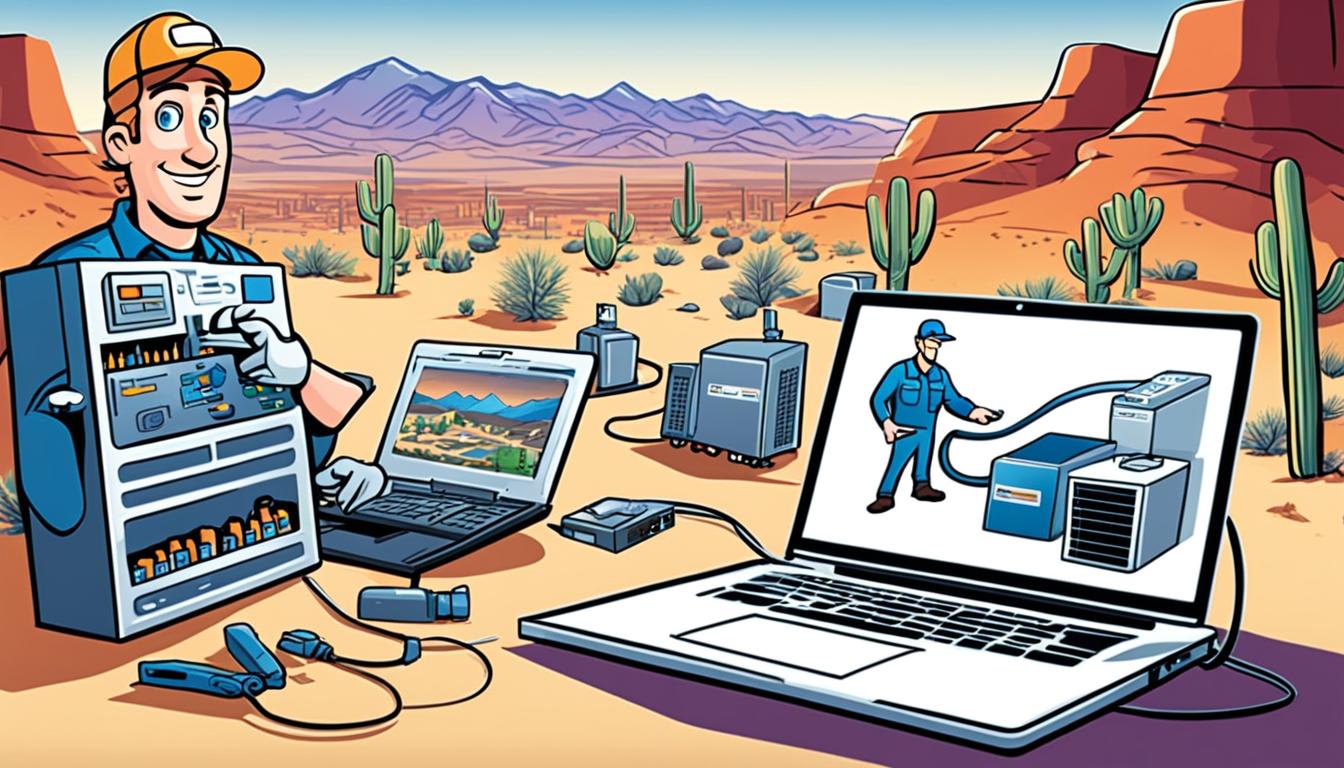Imagine this scenario: It’s a scorching summer day, and you and your family eagerly retreat indoors, seeking relief from the sweltering heat. You expect your air conditioning system to provide the cool, refreshing air you desperately need. But to your dismay, you realize that something isn’t right. The air feels tepid, and there’s an unsettling lack of comfort in your home.
This is a situation that many of us can relate to – the frustration of an inefficient HVAC system. Whether it’s inadequate cooling, skyrocketing energy bills, or incessant repairs, an underperforming HVAC system can wreak havoc on our comfort and well-being. But did you know that one of the most common culprits behind HVAC system inefficiency and performance issues is undetected leaks?
Leaking air conditioning systems can lead to a myriad of problems, from decreased energy efficiency to potential damage to critical components. Identifying and resolving these leaks is crucial not only to restore comfort but also to optimize energy consumption and reduce maintenance costs. This is where AC leak detectors come into play, revolutionizing HVAC system diagnostics and enabling efficient leak detection.
Key Takeaways:
- Undetected leaks in HVAC systems can lead to decreased energy efficiency and increased maintenance costs.
- AC leak detectors play a crucial role in identifying and resolving leaks in HVAC systems.
- By utilizing advanced leak detection technologies, AC repair contractors can accurately locate and diagnose leaks.
- Prompt repair of leaks prevents further damage to the HVAC system and ensures optimal performance.
- Incorporating AC leak detectors into diagnostic processes improves overall service quality and promotes energy efficiency.
The importance of HVAC system leak detection
HVAC system leak detection plays a crucial role in maintaining the performance and energy efficiency of your HVAC system. Leaks in your HVAC system can lead to significant energy waste, increased operating costs, and decreased comfort for building occupants. It is essential to detect and repair these leaks promptly to prevent these issues and ensure optimal system performance.
To effectively detect leaks in your HVAC system, specialized HVAC leak detectors are utilized. These leak detectors are designed to identify and locate leaks in various components of the system, including refrigerant lines, coils, valves, and fittings. By utilizing these HVAC leak detectors, you can accurately pinpoint the location of the leaks and prioritize repairs accordingly.
There are several methods and technologies employed in HVAC leak detection. Some of the commonly used techniques include:
- Electronic leak detectors: These detectors use sensitive sensors to analyze the concentration of specific gases in the air, enabling them to detect refrigerant leaks effectively.
- Ultrasonic leak detectors: These detectors detect leaks by capturing the sound frequency generated by escaping gases, allowing you to pinpoint the exact location of the leak.
- Dye testing: This method involves adding a fluorescent dye to the system, which becomes visible under UV light, making it easier for technicians to identify the location of the leaks.
- Thermal imaging: Thermal imaging can be used to detect temperature anomalies associated with refrigerant leaks, providing a visual indication of potential leaks.
By employing these HVAC leak detection methods and tools, you can accurately identify and repair leaks, ensuring that your HVAC system operates efficiently and minimizes energy consumption.
Benefits of HVAC system leak detection:
Regular HVAC system leak detection offers several benefits, including:
- Prolonging the lifespan of your HVAC system by preventing damage caused by leaks.
- Minimizing energy waste and reducing operating costs by ensuring the system operates at its optimal efficiency.
- Enhancing the overall comfort and air quality in your building by maintaining consistent temperature control.
- Preventing unnecessary wear and tear on system components, reducing the need for frequent repairs.
| Methods and Technologies | Advantages |
|---|---|
| Electronic leak detectors | Highly sensitive and accurate |
| Ultrasonic leak detectors | Precisely locate leaks |
| Dye testing | Visible indication of leaks |
| Thermal imaging | Visual detection of temperature anomalies |
The role of AC repair contractors in HVAC system leak detection
AC repair contractors play a critical role in maintaining the efficiency and reliability of HVAC systems by performing thorough inspections and detecting potential leaks. As an AC repair contractor, your responsibility includes identifying and repairing any leaks that may be present in the system. To begin with, you conduct a comprehensive HVAC system inspection, examining all components such as refrigerant lines, coils, valves, and fittings for any signs of leakage. By utilizing various leak detection methods like visual inspection and pressure testing, you can accurately assess the integrity of the system and identify any leaks or pressure drops that indicate potential issues.
When conducting an HVAC system inspection, it is essential to stay updated with the latest leak detection methods and technologies. By incorporating specialized tools like leak detectors into your diagnostic process, you can enhance the accuracy and efficiency of leak detection. These tools enable you to pinpoint the source and severity of leaks promptly, allowing for timely repairs and preventing further damage to the system.
Ensuring prompt and accurate leak detection is crucial for optimal system performance and customer satisfaction. By maintaining a proactive approach to leak detection, you can help prolong the lifespan of HVAC systems, minimize energy waste, and ensure the comfort of building occupants. Therefore, as an AC repair contractor, it is imperative to prioritize regular HVAC system inspections and invest in advanced leak detection tools and techniques. By doing so, you can provide comprehensive and effective leak detection services to your clients, establishing your reputation as a trustworthy expert in the field.





0 Comments